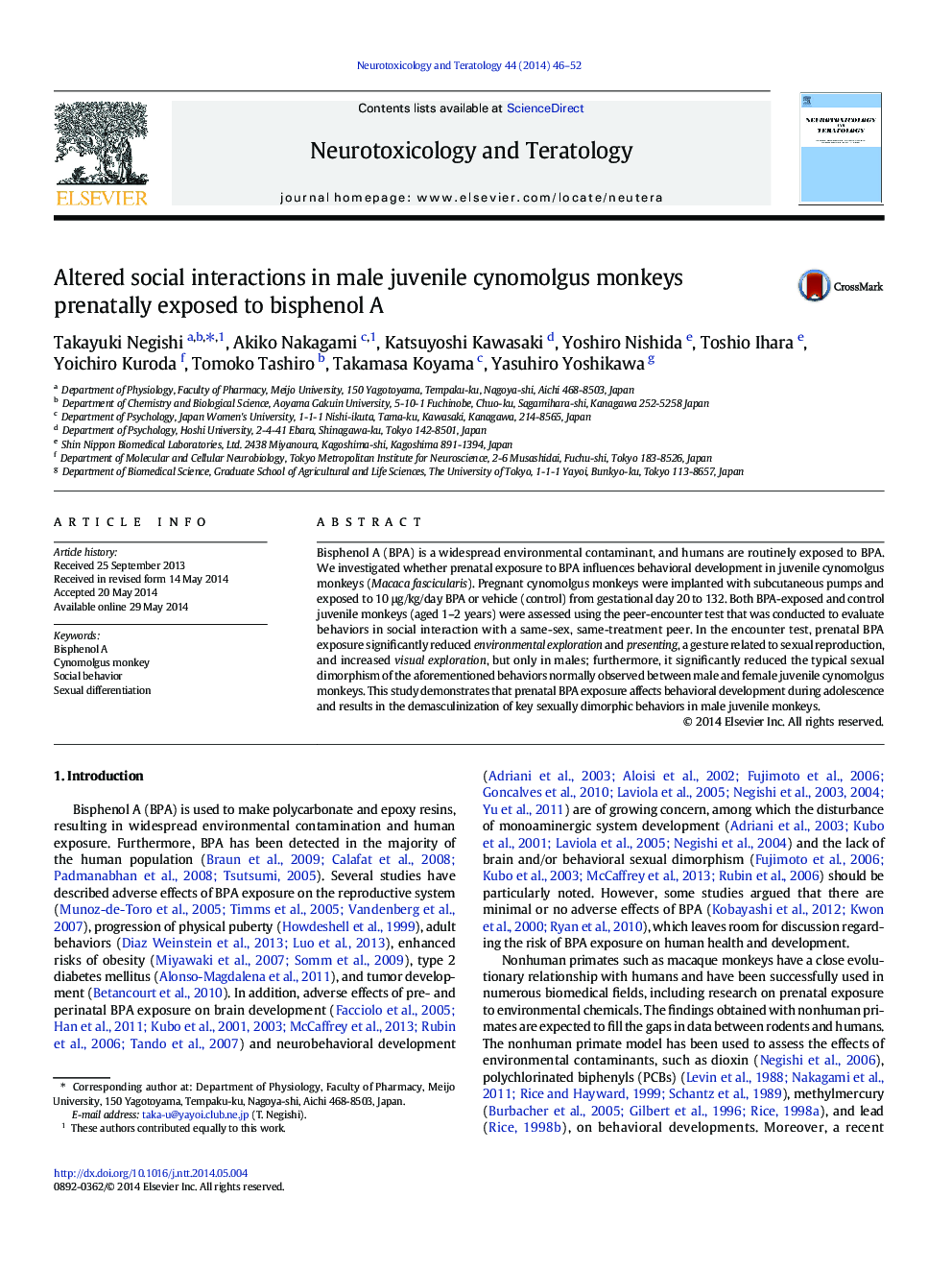| Article ID | Journal | Published Year | Pages | File Type |
|---|---|---|---|---|
| 2591028 | Neurotoxicology and Teratology | 2014 | 7 Pages |
•We performed prenatal exposure to BPA in cynomolgus monkeys.•Prenatal exposure to BPA affected social interaction behaviors specifically in male juvenile monkeys.•Prenatal exposure to BPA reduced the present behavioral differences between male and female.
Bisphenol A (BPA) is a widespread environmental contaminant, and humans are routinely exposed to BPA. We investigated whether prenatal exposure to BPA influences behavioral development in juvenile cynomolgus monkeys (Macaca fascicularis). Pregnant cynomolgus monkeys were implanted with subcutaneous pumps and exposed to 10 μg/kg/day BPA or vehicle (control) from gestational day 20 to 132. Both BPA-exposed and control juvenile monkeys (aged 1–2 years) were assessed using the peer-encounter test that was conducted to evaluate behaviors in social interaction with a same-sex, same-treatment peer. In the encounter test, prenatal BPA exposure significantly reduced environmental exploration and presenting, a gesture related to sexual reproduction, and increased visual exploration, but only in males; furthermore, it significantly reduced the typical sexual dimorphism of the aforementioned behaviors normally observed between male and female juvenile cynomolgus monkeys. This study demonstrates that prenatal BPA exposure affects behavioral development during adolescence and results in the demasculinization of key sexually dimorphic behaviors in male juvenile monkeys.
